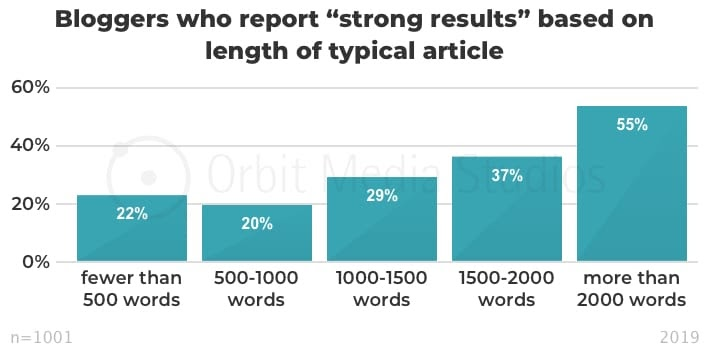What is foundational content? Foundational content is any supporting content you create or solicit. This content supports the higher levels of content and strategy, serving as a foundation that you build upon. To fully execute your content strategy, quality foundational content must be produced at scale.
Build a strong foundation. It’s an encouraging saying that gets thrown around a lot with content marketers. But, what does it really mean?
It means seeing how all of your content is working together inside the greater content marketing hierarchy, which includes 11 content levels. When you understand how to properly organize and structure your content, you offer a high caliber brand experience. From core content at the top of the hierarchy down to content elements, everything is connected.
Foundational content is the base, the supporting system that holds up the bigger pieces of your brand experience. How do you build a strong foundation? And, how do you create foundational content in a scalable way? This is how.

What is foundational content?
Foundational content is any supporting content you create or solicit. This content supports the higher levels of content and strategy, serving as a foundation that you build upon. To fully execute your content strategy, quality foundational content must be produced at scale.
Toward the bottom of the brand hierarchy, foundational content is the ninth level out of the 11 total content levels. You might reject the notion that foundational content is so low on the brand hierarchy. That doesn’t mean that foundational content is not important. In fact, it is absolutely necessary.
Because your content foundation needs to be strong, you need to produce a lot of foundational content — more so than any other content level. Blogs are just one foundational content type, but there are many others, such as product descriptions, reviews, and user-generated content.
Foundational content vs. core content
The terms foundational content (#9) and core content (#1) are often used interchangeably by content marketers. For the purposes of this content hierarchy, they serve very different purposes.
Love a good old-fashioned dictionary comparison? So do I…
- Core = the central, innermost, or most essential part of anything.
- Foundational = the natural or prepared ground or base on which some structure rests.
Foundational content like a product description is not the most essential part of the brand experience like a mission statement, a core content example. Instead, the product description provides the base of the structure, supporting the mission statement. Product descriptions are created and updated frequently, while a mission statement is occasionally revisited and refreshed.
Furthermore, product descriptions directly support vertical content (#2), the content level just underneath core content. Again, verticals might change as the organization changes, but not nearly at the same frequency as product descriptions.

Why foundational content matters
Foundational content matters because you can’t build anything on a weak foundation if you want it to last.
Look at content hubs, like your organization’s blog or customer help center. A content hub simply would not exist without all of the supportive content that makes it your brand’s resource epicenter. It would be a blank website page with image placeholders and lorem ipsum. It would be an empty shell.
Foundational content feeds into all of the higher content levels. And, even though it is not the most essential content for the brand, it is still incredibly important. We all know the power of useful content. When we educate prospects and customers, give our knowledge away with how-to’s and thought leadership, people notice and appreciate it. When you have the best answers to the most common or complex questions, Google ranks your website higher and higher.
Even the smallest brands can outrank and outperform their competitors if they consistently execute quality foundational content. The brand sees results in the form of engagement, traffic, conversions — and eventually — revenue.

How to be resourceful with foundational content
Foundational content is the intersection of quality and quantity. It can require the largest scale and a substantial amount of time and resources. So, how do you keep up with the foundational content production cycle? By being resourceful.
1. Repurpose content.
If you treat each piece of foundational content as its own masterpiece, you will struggle to keep up with the production cycle. Repurpose. Work with higher content levels that need supporting content and play off of hidden content gems.
- Campaigns: Use events for a multi-channel onslaught — create promo content before, live content during the event, and recap content afterward.
- Pillars: Use a keyword-targeted top page or asset to create sub-topic offshoots that link back to the pillar.
- Skyscrapers: Use an original data study as your muse for additional content that links back to the skyscraper.
- Presentations: Use any speaker engagements, decks, or webinars as an excuse to create a wealth of content. (These rich resources are frequently forgotten.)
- Case studies: Use customer experiences to produce additional content about features or services that helped them solve goals and challenges.
- Questions: Use brand FAQs to provide relevant answers to your audience. Talk to your customer-facing team members, who constantly answer repetitive questions by email.
2. Work with themes.
Just because foundational content sits lower on the content marketing hierarchy doesn’t mean the strategy should fall off. Rather than thinking about foundational content working independently, work with themes to create a cohesive learning experience for your audience.
- Personas: Are you addressing all of your personas, or just one or two? If you find you are alienating a specific persona, produce foundational content just for them.
- Buyer’s journey: The majority of your content will be education/top-of-funnel. Are you missing consideration/mid-funnel content? Audit your content, then fill in the gaps.
- Verticals: Maybe your organization is introducing a new vertical and you need to drive awareness… create foundational content.
- Services/features: Help your audience understand what you have to offer and drill down into how your services or features work and provide benefits.
- Internal initiatives: Maybe “productivity” is something your team is working on this year. Your customers can relate, right? Create foundational content focused on that internal initiative.
3. Work ahead.
Writing blogs at the last-minute? Writing every week? Missing deadlines? Skipping a week of blog content production because you can’t keep up? You’re chasing your tail — get out of this vortex by working ahead (and thinking ahead).
For blog content, quarterly content creation cycles work really well. You don’t create Q3 content during Q3. The bulk of your content production happens the quarter before in Q2.
Here is what a Q3 (Jul-Sept) content creation schedule looks like:
- April – Topic research and finalization.
- May – Content creation and approvals.
- June – Formatting and social scheduling.
4. Hire content creators.
Don’t try to be a hero and create everything yourself — even if you can write, even if you love to write. Just because you can doesn’t mean you should. Creating content takes hours of concentration that you could spend on other priorities.
Here are a few resources to help you find content support…
- Timing: Do I need to hire a content creator? 9 Reasons You Might Need a Content Creator for Your Next Brand
- Types: What type of content creator do I need? 10 Types of Content Writers and When to Use Them
- Talent: Where do I find content creators? Hire Freelancers Through ClearVoice

2 branded examples of foundational content
You see foundational content all the time. You might marvel at brands that constantly produce quality content and manage to move at a good clip. Here are two brand examples to motivate you.
1. Blog foundational content
You may have heard of Andy Crestodina, a content marketing influencer and co-founder of Orbit Media. I stumbled across one of his skyscrapers, where his team conducted an original data study about blogging, and sourced it constantly.
This is a great example of using a “muse” for creating a wealth of foundational content. Orbit Media links to this piece any time they mention a stat about blogging. Others add fuel to the fire by linking to that same skyscraper, like I did here on ClearVoice when I interviewed Andy.

2. User-generated foundational content
For selfish reasons, I love Fran Denim because they make jeans specifically for athletic bodies. When I first heard about Fran Denim, I was skeptical. Could it be true? Jeans that don’t gap at the waist, that don’t wear or rip in the inner thighs region?
They prove their point by leveraging user-generated content on their Instagram channel. You won’t see a bunch of 6-foot gazelle-like models wearing their denim. You see athletic customers happily showing off the jeans, even while weight-lifting.

Foundational content is the foundation, necessary for preserving the integrity of the entire content structure. Rather than seeing your foundational content as its own system, see it as a support system. Then, you’ll be on your way to building a strong foundation that truly supports your brand experience.



